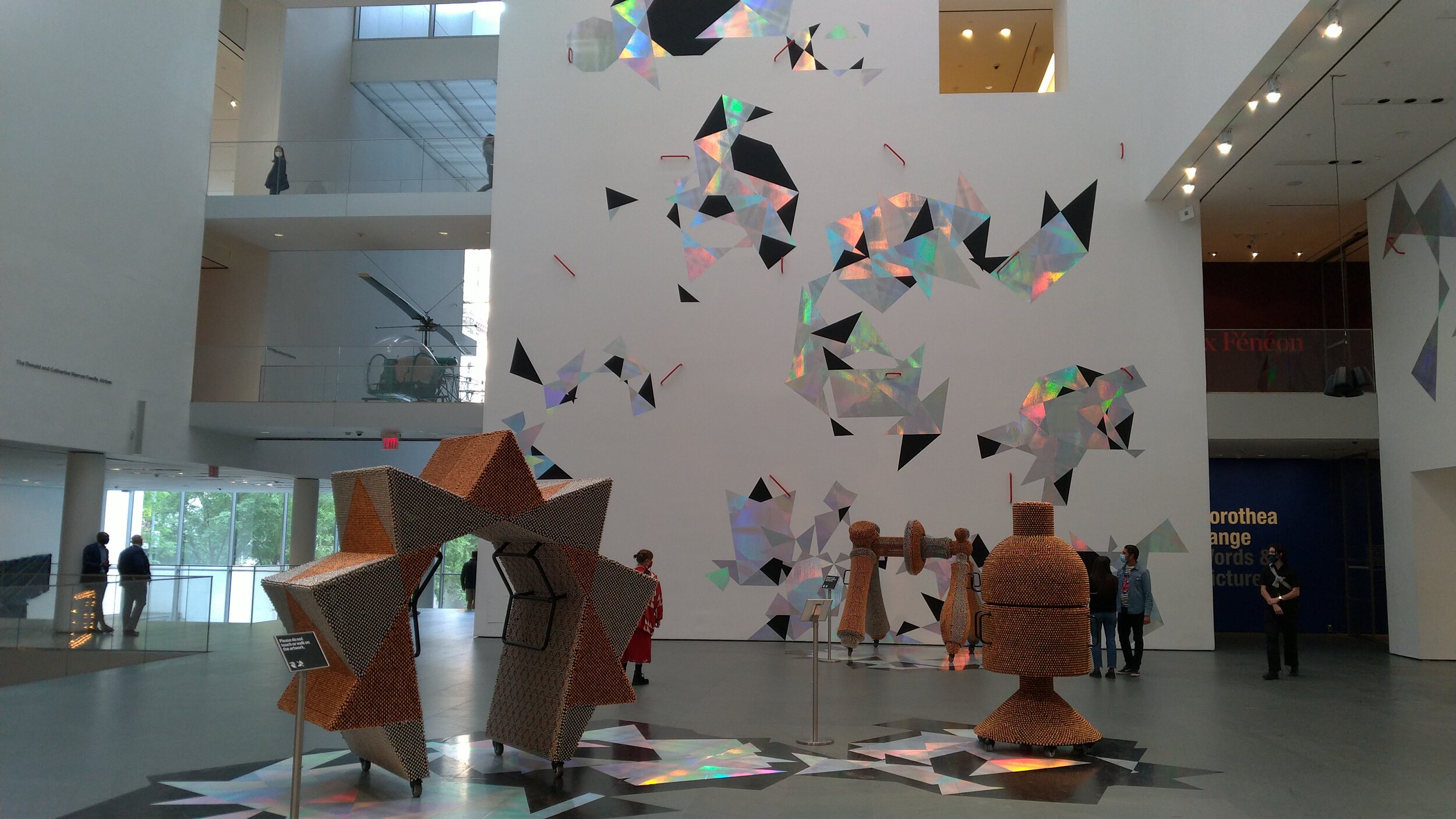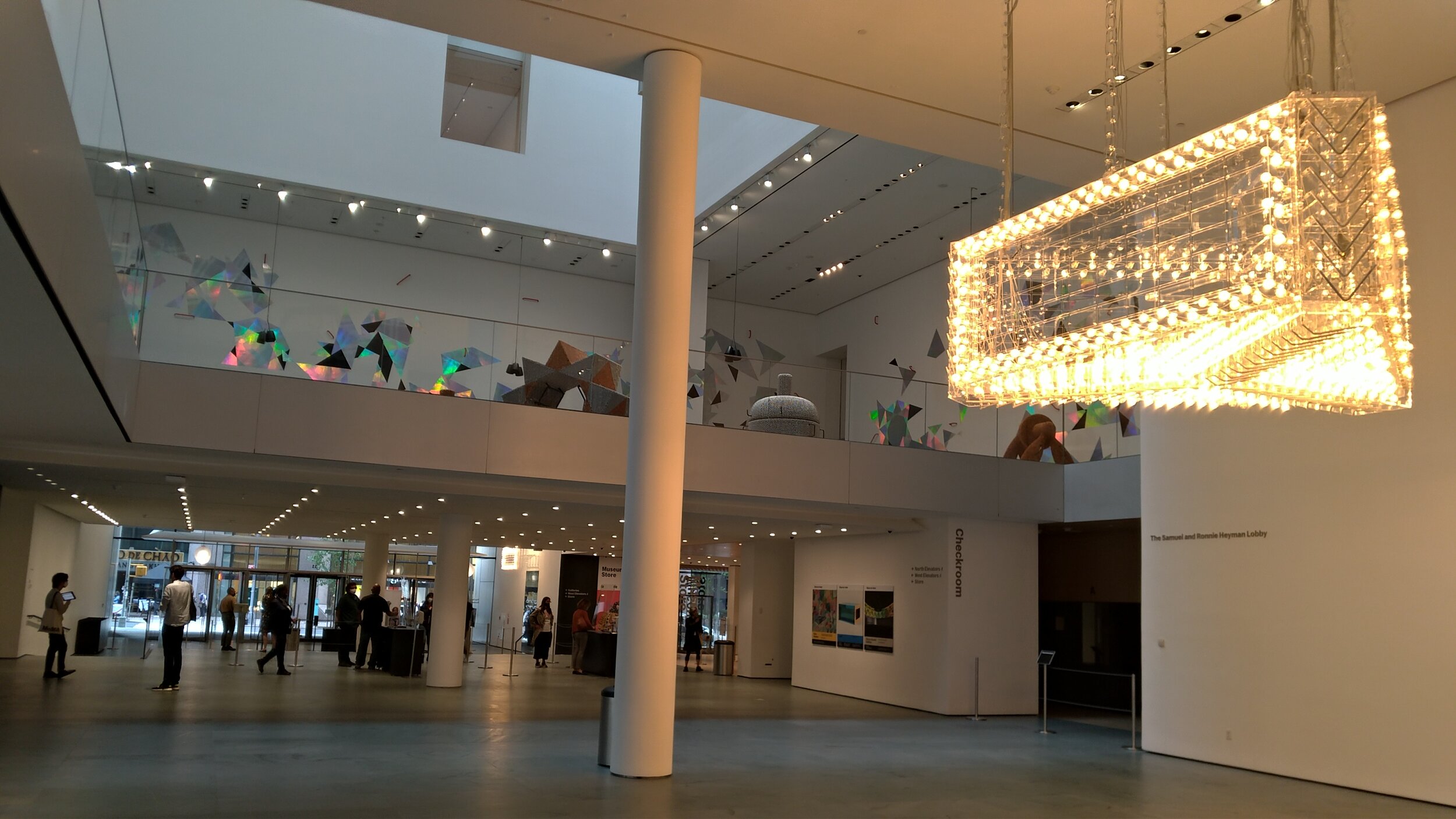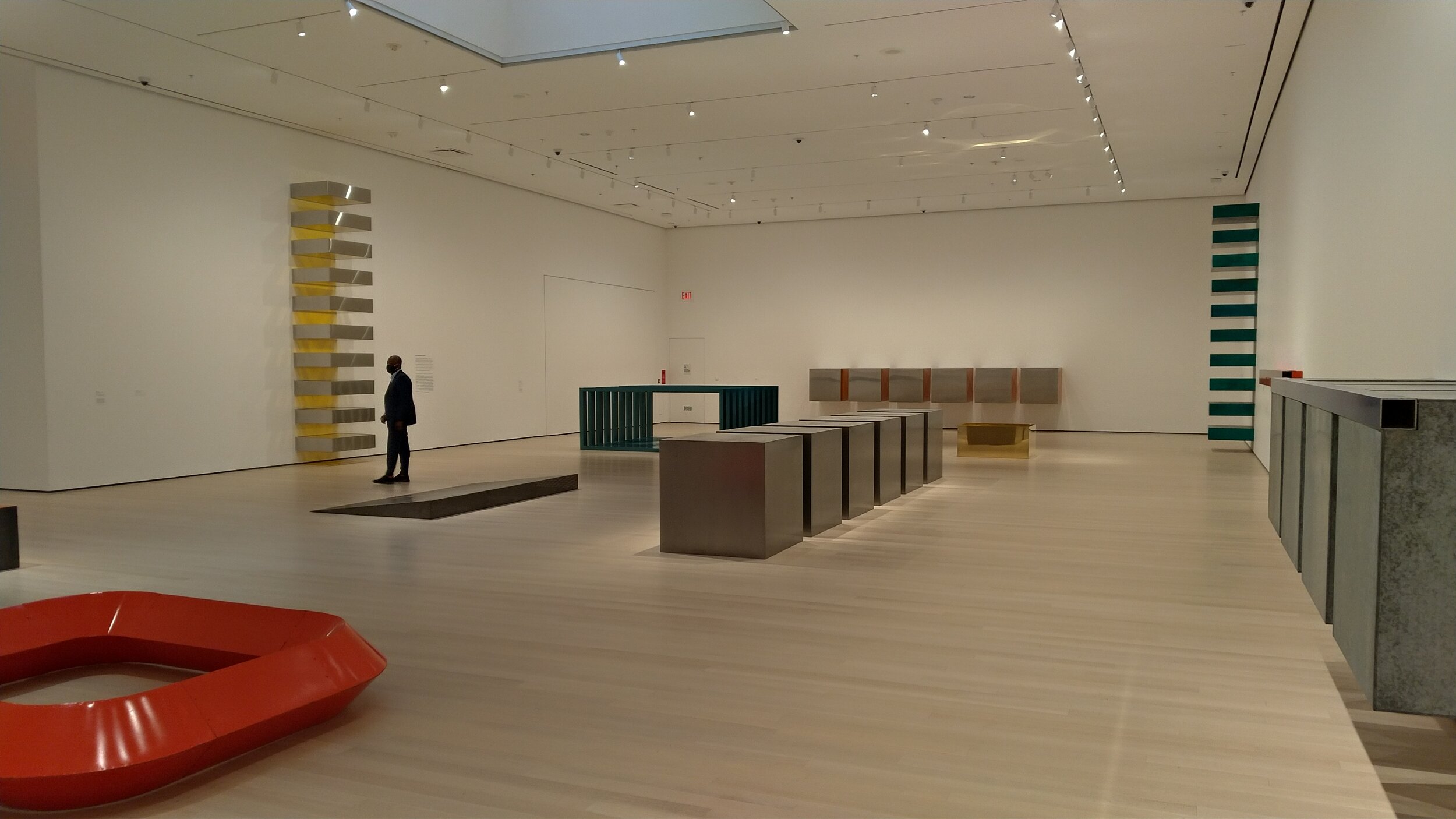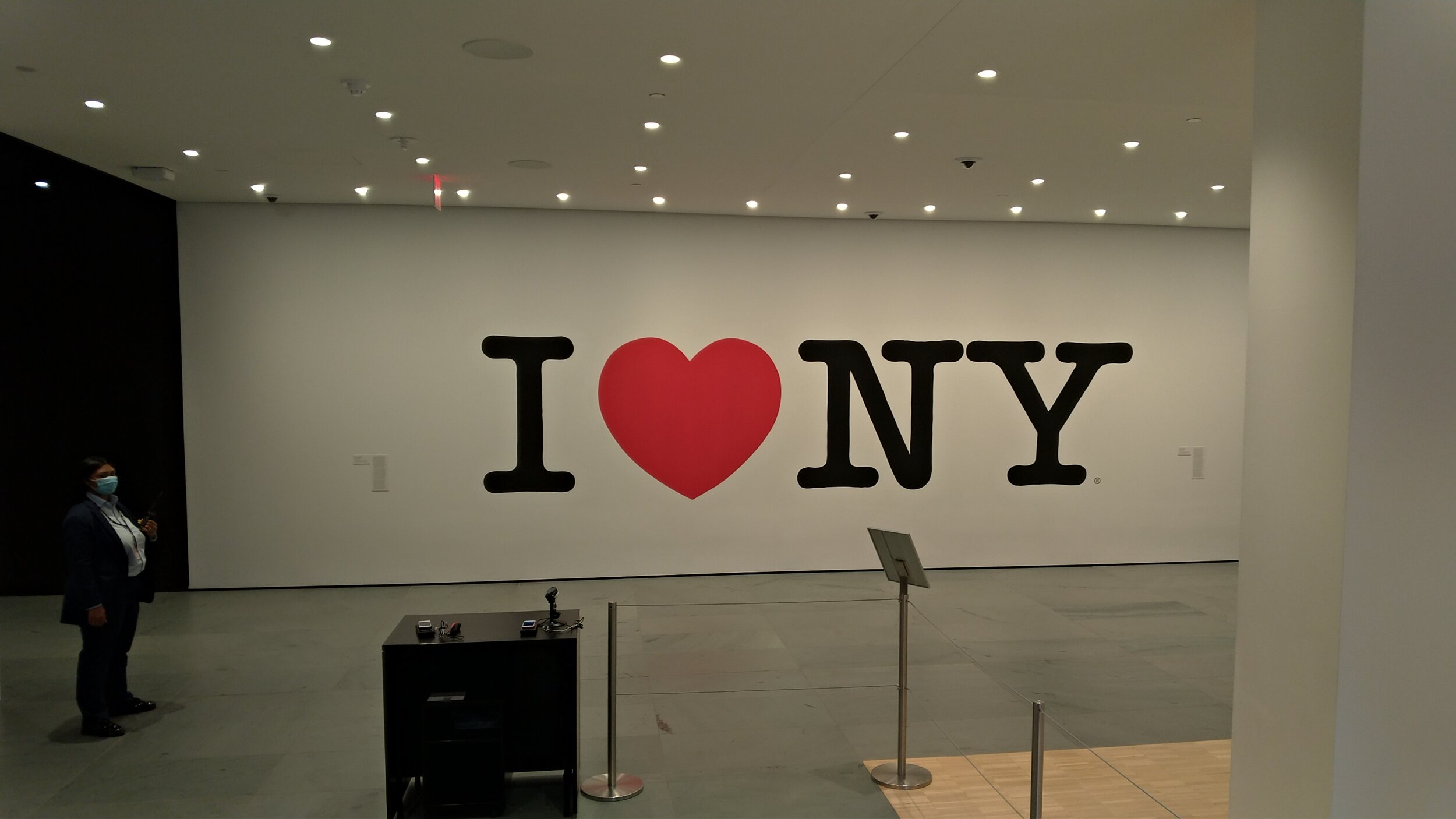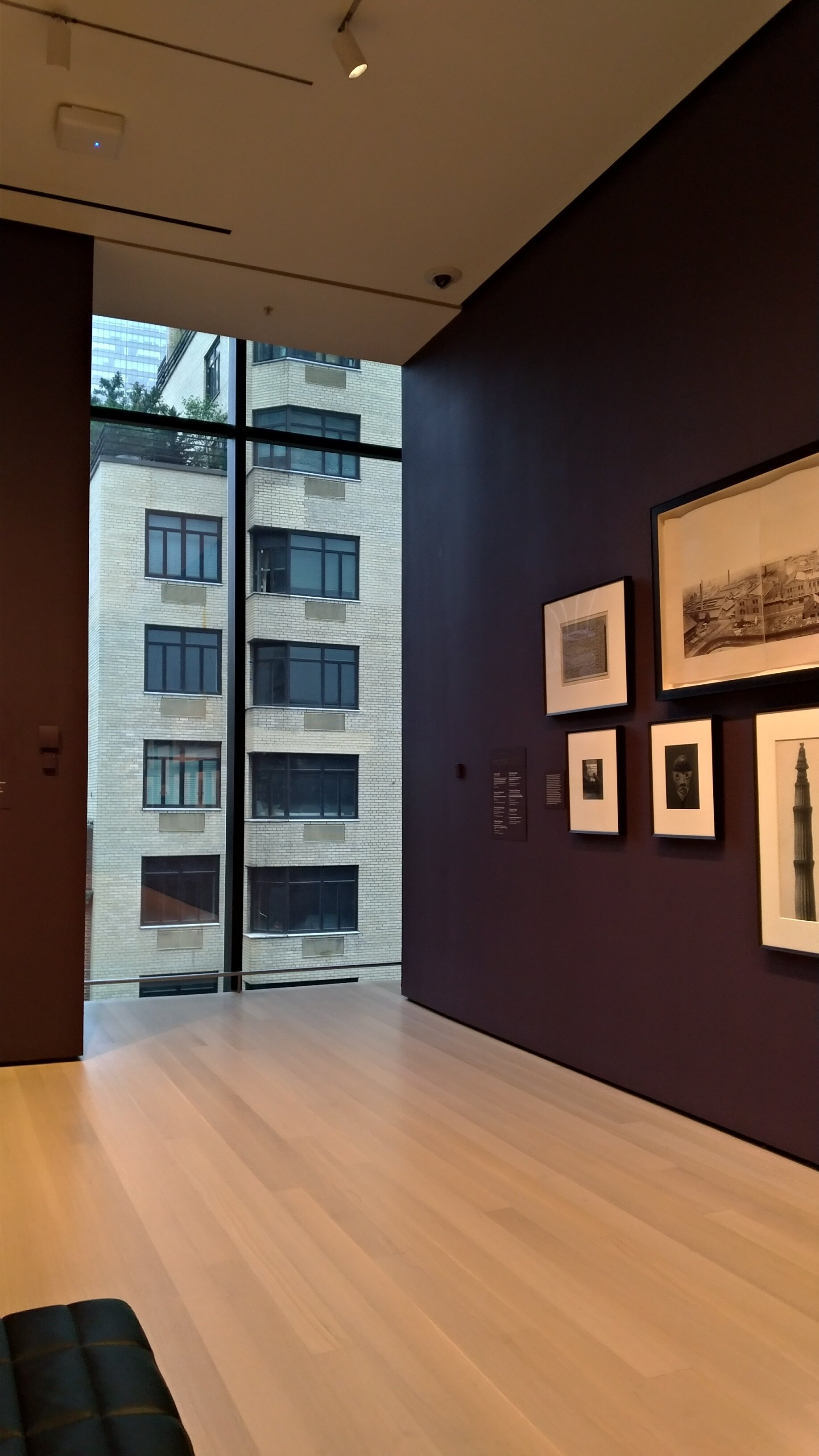Intoxication -that’s the first word that came to my mind after visiting the recently reopened MoMA. I record the feeling raw, before it fades away with the return to reality (or New Normal). At last, I’ve found again the familiar drive that moves me (used to move me?), along with the millions of my fellow citizens, to the rhythm of the metropolis.
For months now, I’ve been seeing the characteristic Manhattan skyline, and missing it: although we are just eighty blocks away (from the corner of our block you can see the Empire State Building!), never before had Midtown seemed so distant. As beloved Tennessee Williams says, “Time is the longest distance between two places.” Because of COVID, I don’t take public transportation or cabs, and, like most of Manhattan residents, we don’t have a car. So, for months now, I have only been going wherever my feet can take me in the stifling NYC summer.
But now it is almost fall, the best, sung far and wide season for the Big Apple. So, I walked to MoMA: from our 137th Street Harlem apartment to 53rd Street, exactly one hour and thirty minutes – provided that you’ll resist the temptation and you’ll walk the entire Fifth Avenue Museum Mile without pausing to take a single picture (okay, I couldn’t hold myself and did take one picture, the new, sliver-like highriser, popping up behind the Plaza).
Two timelines unfold inside my head: one, the comparison between the Collective Before (as in before the pandemic) and the Collective Now; the other, my personal fifteen-year anniversary with this city, and, more specifically, a visit to MoMA exactly at this time of the year, early fall 2005, with my professor, Anne Bogart, and my five classmates at the Columbia University MFA in Theatre Directing –yes, that day’s class did not take place on campus but at MoMA. The same way in 2005 I could not believe my luck at having been admitted at the prestigious graduate program, the same way now I am grateful to still be here –at MoMA, in New York, and –most importantly- in life (for the time being, at least), amidst the New Normal.
The second I enter (after the classic temperature-taking and mask protocol), I am greeted by the outer-space like sound from the high-tech light and sound ceiling installation of the lobby. The moving mechanism, combined with the eerie emptiness of the normally crowded and noisy ground floor, creates an almost metaphysical effect. I glance through the window at the beloved sculpture garden, but I resist the outside –I can’t wait to get deeper inside. I impatiently climb up the stairs and almost run to get to the center of the atrium, which, with its breathtaking height, forces you to look not only at the works in front of you but also around you and up, to take in the interior balconies of the six floors, as if it’s telling you, “Hey, look at me, I’m MoMA!” I turn at the corner and am grabbed by Dorothea Lange’s enigmatic America. I pause in front of the captivating “Migrant Mother”, but I also discover the lighter, yet melancholy beauty of “Union Square.”
But the feeling of a relative cram in these rather small photography rooms pushes me to the escalator. Purring from the joy of recognition, I apply my old technique: I go nonstop up to the sixth floor, and then continue my visit to the individual floors going down. There, at the “penthouse”, awaits me the quintessence of the vast space which you would think was built precisely for the apotheosis of the geometry and the polychrome of Donald Judd’s “sculptures”/constructions/installations. An orgasm for the lovers of form –especially if you can be on your own in this playground of metal, plexiglass and wood, and in this feast of color, shape and perspective games!
I painfully bid farewell to the colorful shelves (I would love to stay forever there, entranced), and I start my descent. My steps lead me to the Early Photography & Film Room, where, once again thanks to the capacity limitations, I enjoy a rare privilege: seated at my bench, I can observe the details of Atget’s black-and-white 1900 Parisian apartment buildings, while having an unobstructed view to the “Demoiselles d’Avignon”, dominating the adjacent room! (Occasionally, I can also peek outside, at the exquisite architecture of the buildings across -my husband and I share the perversion to often prefer the view of the city over the exhibits themselves…)
Impossible to turn off the switch of timelines and threads: shortly before the museum closes, I accidentally land in the “Water Lilies” Room. A lump climbs up my throat, as this was the work I had selected then, on that chilly October 2005 morning, when Anne Bogart had dispatched us to wander around the museum and to then share a work that had stood out for us. I chose it then for its cinematic quality –as if Monet had tried to capture something from the motion of painting. I spend the last minutes (until the familiar museum closing announcements start playing in a variety of languages, a staple that makes you want to learn them all) seated in front of the “Water Lilies”, and I let my gaze get lost in the melted paint and all the timelines to blur.
The Museum is now closed, and I am the last visitor, but because I politely thank the guards, I think they’re not looking grumpily at me (or maybe I can’t see it because they’re wearing masks?). Last but not least, at the exit, “lurks” for me the iconic –the term has been overused recently, but I think it is required in this case- “I ♥ NY”. (If this is not iconic, I don’t know what is.) If reuniting with MoMA is intoxicating, living in New York is addictive.
This essay first appeared in Greek in the TA NEA newspaper (in print and online) on September 26, 2020.
It was reproduced by HellasJournal.com on October 11, 2020.
Το κείμενο αυτό πρωτοδημοσιεύτηκε στην εφημερίδα ΤΑ ΝΕΑ (έντυπη και ηλεκτρονική έκδοση) στις 26 Σεπτεμβρίου 2020.
Αναδημοσιεύτηκε από το HellasJournal.com στις 11 Οκτωβρίου 2020.
Για να διαβάσετε το ελληνικό κείμενο, κάντε κλικ εδώ.
